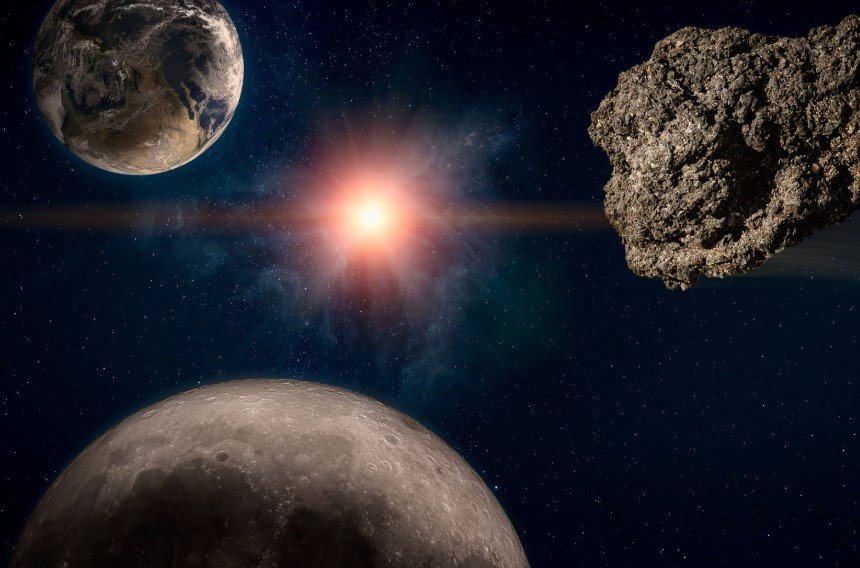A once-Earth-threatening asteroid now seems to be setting its sights on the Moon instead. And while humanity breathes a sigh of relief, space scientists are still keeping a close watch on this cosmic curveball.
The object in question—asteroid 2024 YR4—has seen its projected path nudged ever so slightly after fresh data from NASA’s arsenal of high-powered telescopes. The outcome? A revised 4.3% chance of impact with the Moon, pegged for December 22, 2032. While not cause for panic, it’s enough to make astronomers perk up.
From Earth Threat to Lunar Concern
When 2024 YR4 first came into view last year, the buzz was immediate. A relatively unknown asteroid, spotted in the crowded sky of near-Earth objects, suddenly found itself at the center of speculation. Was Earth in its crosshairs?
Initially, early orbital models flagged a narrow corridor of risk that included Earth. It wasn’t a high-probability threat—but with something this size, even a 1% chance makes headlines. But now, thanks to refined data, including observations from the James Webb Space Telescope and Earth-based radar facilities, the focus has shifted.
What the new data suggests is this: Earth may be off the hook, but the Moon could be in for a cosmic bruise.

A 4.3% Shot at Lunar Impact
NASA’s Center for Near Earth Object Studies (CNEOS) confirmed the update late Monday. With the additional tracking inputs, scientists were able to sharpen their prediction models. That improved clarity boosted the impact probability with the Moon from 3.8% to 4.3%.
In practical terms, that’s still relatively low. But in astronomical terms? It’s enough to take seriously.
“The Webb data improved our knowledge of where the asteroid will be on December 22, 2032, by nearly 20%,” NASA stated in a recent blog post. “As a result, the asteroid’s probability of impacting the Moon has slightly increased.”
The impact, if it were to happen, wouldn’t be enough to shift the Moon’s orbit. That’s the good news. But it might still leave a visible scar—one we could see from Earth with even amateur telescopes.
What Makes 2024 YR4 a “City Killer”?
So why all the fuss?
Because 2024 YR4 isn’t your average space pebble. It’s big—really big. Experts estimate it’s somewhere between 80 and 120 meters in diameter. That’s roughly the size of a football stadium.
If something like that hit Earth? It could flatten a city.
-
The asteroid’s size classifies it as a potential “city killer”
-
It belongs to the Apollo group of near-Earth objects
-
Its trajectory intersects Earth’s orbit during certain windows
That nickname—”city killer”—isn’t hyperbole. It refers to the class of asteroids large enough to cause regional devastation. While not in the same league as the dinosaur-ending Chicxulub impactor, it’s enough to destroy infrastructure, spark fires, and trigger local climate anomalies.
Could It Really Happen? The Numbers Say…
NASA’s probabilistic models factor in everything from gravitational tugs by other celestial bodies to the asteroid’s rotation and surface reflectivity. Even solar radiation can alter an asteroid’s path subtly over time.
But 4.3% isn’t enough to call it a certainty—just a possibility worth tracking.
What Happens If It Hits the Moon?
This is where things get fascinating. While a Moon impact won’t alter its orbit, it could cause a fresh crater. Possibly a very large one.
Some scientists suggest the impact would resemble the kind that created the famous Tycho crater, visible with binoculars from Earth. Others say it would be smaller, but still measurable.
If it happens, it would provide an unprecedented scientific opportunity:
-
Astronomers could study real-time impact physics
-
Moon-orbiting satellites might capture the event
-
Seismometers left from past lunar missions could pick up the shockwaves
And for the average person on Earth? You might just spot a new mark on the Moon in 2032—if you know where to look.
Still on NASA’s Radar
Despite the lowered risk to Earth, 2024 YR4 isn’t being downgraded to a non-threat just yet. It remains on NASA’s watchlist. These decisions aren’t made lightly. Near-Earth object trajectories are dynamic, and they evolve with each new observation.
In fact, some astronomers think the story of YR4 may not end in 2032.
It could pass close to Earth again in the decades ahead, with fresh risk assessments along the way. The Moon may take the hit this time—but who knows what the dice roll of gravity might bring in future flybys?
As of now, NASA plans to continue monitoring it through various international collaborations and telescope networks. New observation windows will open in late 2026, when YR4 comes back into visible range for Earth-based instruments.
